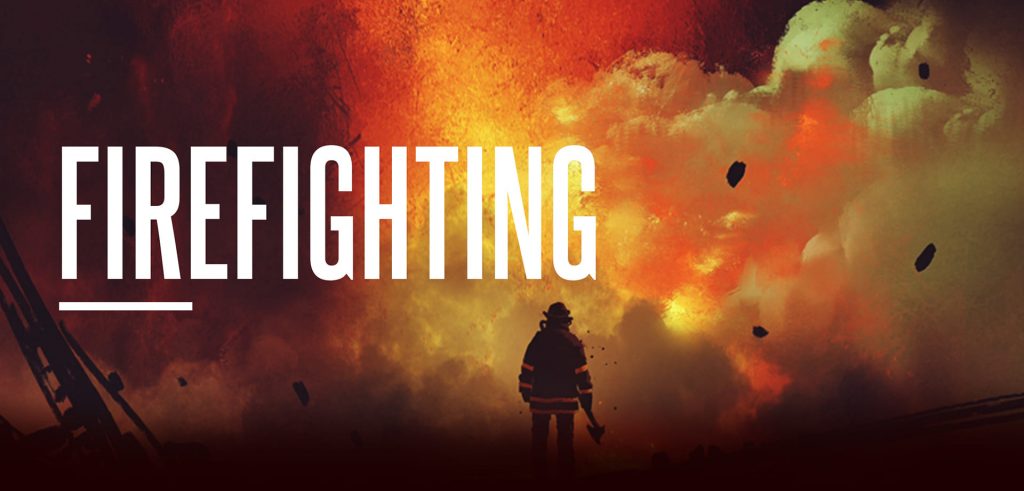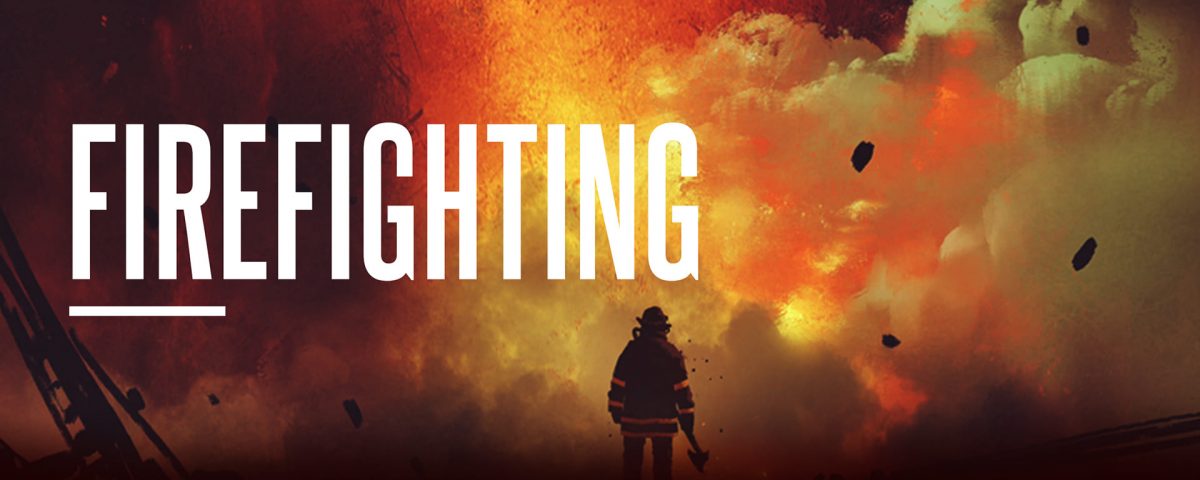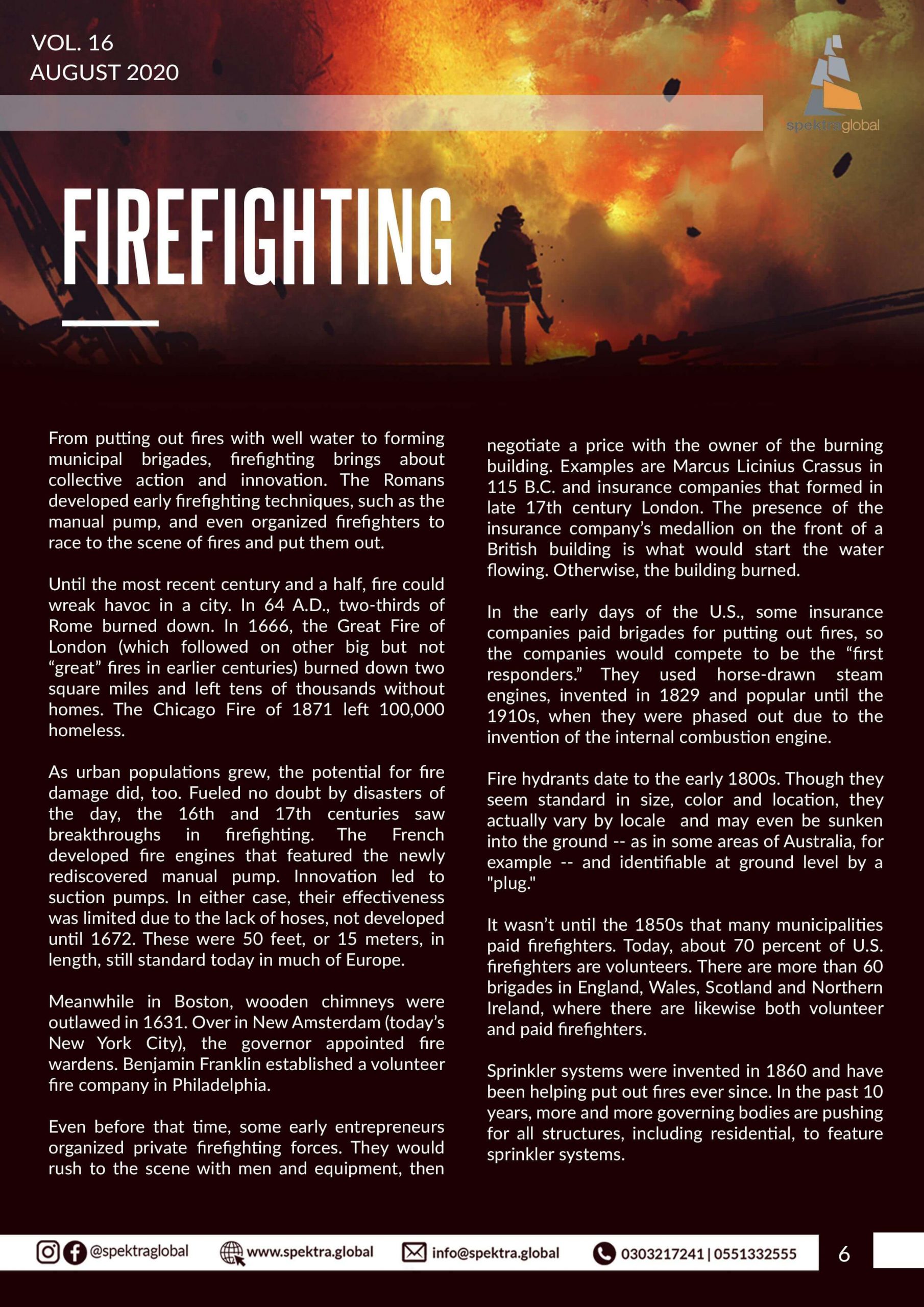
FIREFIGHTING UNPLUGGED
From putting out fires with well water to forming municipal brigades, firefighting brings about collective action and innovation. The Romans developed early firefighting techniques, such as the manual pump, and even organized firefighters to race to the scene of fires and put them out.
Until the most recent century and a half, fire could wreak havoc in a city. In 64 A.D., two-thirds of Rome burned down. In 1666, the Great Fire of London (which followed on other big but not “great” fires in earlier centuries) burned down two square miles and left tens of thousands without homes. The Chicago Fire of 1871 left 100,000 homeless.
As urban populations grew, the potential for fire damage did, too. Fueled no doubt by disasters of the day, the 16th and 17th centuries saw breakthroughs in firefighting. The French developed fire engines that featured the newly rediscovered manual pump. Innovation led to suction pumps. In either case, their effectiveness was limited due to the lack of hoses, not developed until 1672. These were 50 feet, or 15 meters, in length, still standard today in much of Europe.
Meanwhile in Boston, wooden chimneys were outlawed in 1631. Over in New Amsterdam (today’s New York City), the governor appointed fire wardens. Benjamin Franklin established a volunteer fire company in Philadelphia.
Even before that time, some early entrepreneurs organized private firefighting forces. They would rush to the scene with men and equipment, then negotiate a price with the owner of the burning building. Examples are Marcus Licinius Crassus in 115 B.C. and insurance companies that formed in late 17th century London. The presence of the insurance company’s medallion on the front of a British building is what would start the water flowing. Otherwise, the building burned.
In the early days of the U.S., some insurance companies paid brigades for putting out fires, so the companies would compete to be the “first responders.” They used horse-drawn steam engines, invented in 1829 and popular until the 1910s, when they were phased out due to the invention of the internal combustion engine.
Fire hydrants date to the early 1800s. Though they seem standard in size, color and location, they actually vary by locale and may even be sunken into the ground -- as in some areas of Australia, for example -- and identifiable at ground level by a "plug."
It wasn’t until the 1850s that many municipalities paid firefighters. Today, about 70 percent of U.S. firefighters are volunteers. There are more than 60 brigades in England, Wales, Scotland and Northern Ireland, where there are likewise both volunteer and paid firefighters.
Sprinkler systems were invented in 1860 and have been helping put out fires ever since. In the past 10 years, more and more governing bodies are pushing for all structures, including residential, to feature sprinkler systems.





